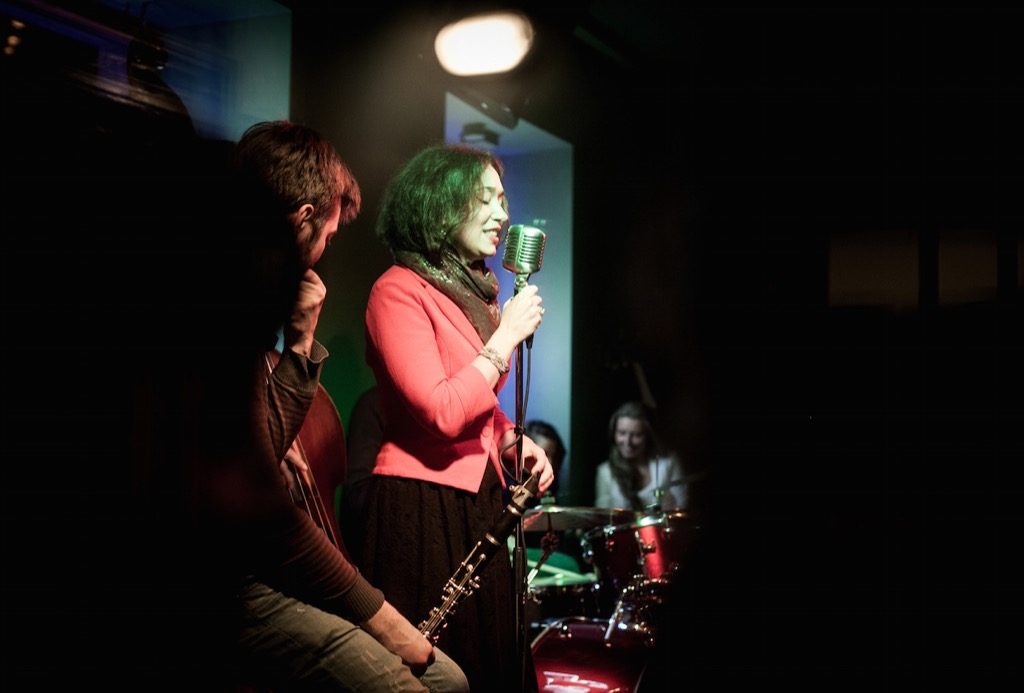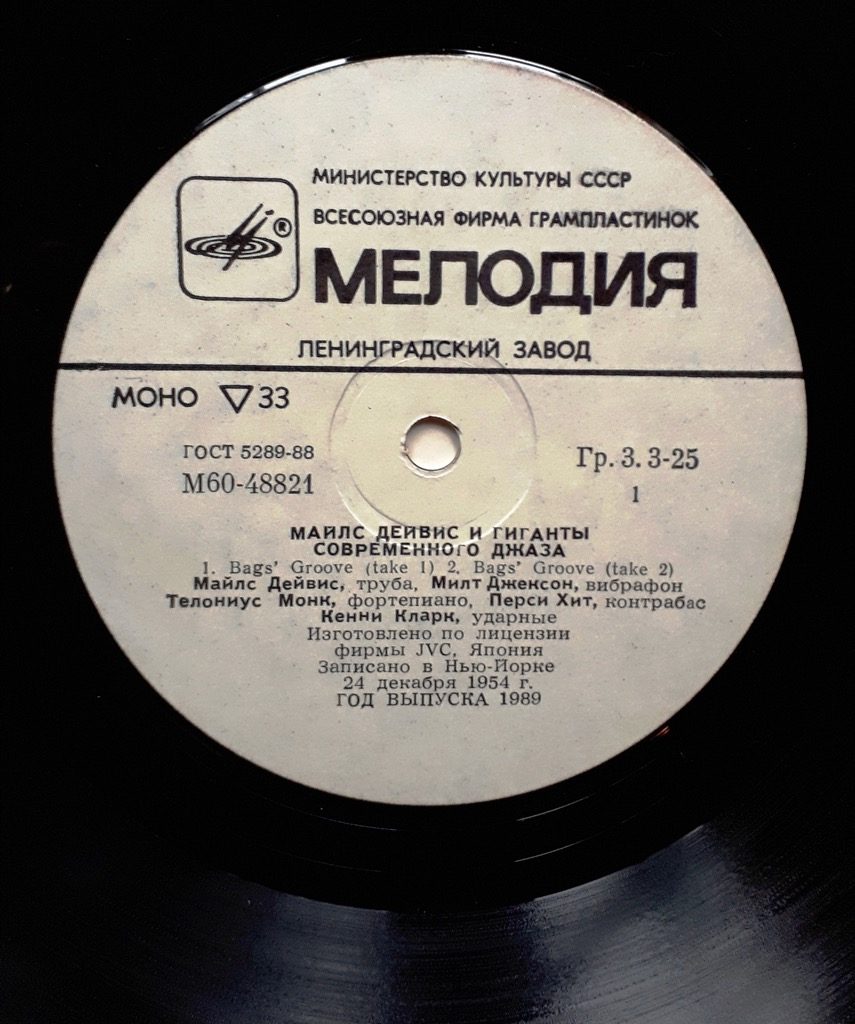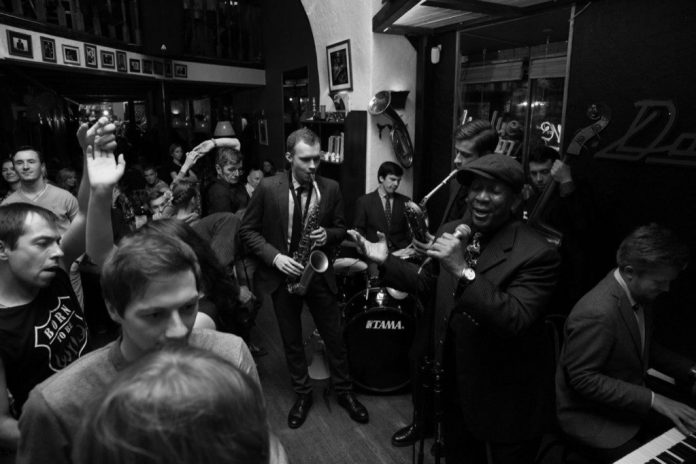Behind its dour façade, St Petersburg is a jazz town.
Gregory Porter croons over the speakers at a restaurant behind the Mariinsky Theatre. At a handicraft shop in the Golitsyn Loft district, the soundtrack is piano trio Hands and Omens. Hop into a cab and Nina Simone’s piano thumps out of the speakers.
So where are we heading? There’s a choice of nearly a dozen venues in the old Russian capital, most with no cover charge and crowds of mostly young listeners. Club website listings are in Russian, but can be deciphered thanks to automatic translation, though names are often bizarrely translated or transliterated. For instance Quo Niam, who appeared there this week, is London pianist Ivo Neame.
JFC: Experimental to Ellington
Neame played at St Petersburg’s premier venue Jazz Friends Club, better known as JFC (Shpalernaya Ulitsa 33) – though it doesn’t look like it, hidden as it is in a dingy courtyard on a non-descript street.
JFC averages one foreign guest per week, recently including US saxophonist Mark Gross, trumpeter John Marshall and Neame, who played with a local trio following a gig with Phronesis and Elliot Galvin at last weekend’s Rainy Days Jazz Fest. Next up is Belgian-Norwegian pianist Jonas Cambien on 27 October. Most of the line-up is mainstream with the occasional foray into experimental, acid jazz or blues.
The night I visited, double bassist and composer Dmitri Semenishchev led his graceful straightahead quartet featuring Ilya Shcheklein on piano, Andrew Polovko, seamlessly switching between soprano, tenor and flute, and drummer Andrei Ivanov ably depping for Garii Bagdasarian, who plays on Semenishchev’s albums including the recent Windows.
JFC was established a quarter-century ago by pianist Andrey Kondakov, who sometimes plays there in an avant-garde trio with trumpeter Slava Guyvoronski and bassist Vladimir Volkov.
“There is a small but devoted cadre of very radical free improvisers in St Petersburg, such as trumpeter-composer Slava Guyvoronski and pianists Alexey Lapin and Roman Stolyar, as well as a modern creative straightahead bunch such as the Evgeny Ponomarev Quartet, which blends modern Euro jazz with modern classical influences”, says Cyril Moshkow, jazz historian and editor of Jazz.ru, who provided valuable tips.
JFC holds just over 100 people, with a dozen small round tables and a small makeshift-looking bar at the back, with the drinks listed on a CD case (no food, keeping the venue quieter).
There’s live music almost every night, with all-age shows on Sunday afternoons, including a recent introduction to Duke Ellington for kids. Otherwise sets begin around 8 and end promptly at 10pm, at which point the place clears out quickly.
The Hat: “Anything can happen”
“Shows end early at JFC as it is in a residential building”, explains Moshkow. “From there it’s easy to get to the Hat Bar, which is an ongoing jam seven nights a week. This is the jazz jam in St. Petersburg. Everybody shows up; anything can happen”.
The Hat (Belinskogo St 9), which bills itself as “a classical American jam-set bar of 40s-50s version”, has a sister venue in Berlin.
It’s often packed, the small space dominated by a large square bar behind which bartenders mix colourful cocktails, while the compact stage looks out onto a side-street near the Fontanka River. Besides a few barstools, it’s standing room only.

Sessions at The Hat (pictured) go on until at least 2am, with no cover charge and modestly priced drinks.
They mostly feature locals but also attract foreign guests following sets at JFC or elsewhere, such as Louis Hayes, Steve Grossman, Sharon Clark and Mark Gross. On an early weekday evening, the New Generation jam spotlighted young vocalists, all female – old gender roles seem firmly entrenched in this rather reactionary town, with women almost exclusively appearing as vocal rather than instrumental soloists.
Most assured of them was Alisa Kokova, who has also appeared at JFC and White Nights over the past few months, and turned in a suitably world-weary Lush Life.
“The Hat’s very cosy”, she says. “Anyone can just come and sing or play here, and people are always welcoming, standing so close to the stage”.
Compared to Moscow, “people in St Petersburg think more about creativity and having a good time than business and money, and this is true in jazz as well. It gives you freedom to create and try to find something new, or just enjoy”, says Kokova. “New generations of jazz musicians are growing and that’s definitely amazing!”
48 Chairs: Velvet plush
Attracting a slightly older crowd is 48 Chairs (Rubinstein St 5), a high-end restaurant offering small-scale shows against a velvet curtain in its back room starting after 9pm, with a second set starting after 11pm on weekends. Admission is free but you may have to wait for a table.
For late-night diners, the sets serve as unobtrusive background music but serious listeners are rewarded by some of the city’s most experienced pros.
On a late-September night, these included tenor saxophonist Alexey Popov and guitarist Alex Degoos, who charmingly channelled Wes Montgomery and Grant Green on a set of bossa nova and American standards. Backing them up discreetly was stand-up bassist Filipp Meshcheryakov. On other nights, the all-Russian line-up ranges from female vocalists and solo pianists to ragtime bands.
Dom 7: Late-night fun
Ragtime, trad and Dixieland are also alive and kicking at Dom 7 (Griboyedov Channel Embankment 7) in the Konyushennaya nightlife district. With dark-stained wood and high ceiling, it has a comfy, relaxed beer-hall feel. People line a curving staircase that offers perfect sightlines onto the stage. For those who can’t see directly, a closed-circuit screen shows the stage in real time, converting it into grainy black-and-white that suits the old-timey music. The small dancefloor is full of couples who actually know how to dance to it.
Lanky trombonist Maxim Tartakovsky led the Roamer Street Rag Jazz Band here, crooning falsetto on chestnuts like When You And I Were Young, Maggie and Didn’t He Ramble.
Tartakovsky, who moved back to the city from Berlin about six months ago, says the club epitomises the city’s lively, youthful – if retro-oriented – jazz scene.
“Lots of young musicians from other parts of Russia are moving to St Petersburg now, so the scene is improving”, he says.
“House 7” is lively from 9-10 pm until 2-3am on weekends, otherwise wrapping up around midnight, with no cover charge.
White Nights and beyond
Cyril Moshkow agrees that the city’s jazz taste is conservative, pointing to the midsummer White Night Swing festival at the State Jazz Philharmonic Hall, opened in a former cinema in 1989.
The festival is “100 per cent pure straight-ahead jazz, with healthy excursions into swing, trad, and Dixieland music”, as he puts it. In summer the country’s oldest jazz appreciation society, Kvadrat (est. 1965), hosts jazz cruises aboard a riverboat.
Jazz restaurants and coffee bars: Admission to these is usually free – just don’t expect to hear much free jazz
He also recommends shows presented by Vladimir Feyertag, “the city’s jazz community doyen, critic and historian who is still going full steam at age 87”. These often feature the Jazz Philharmonic Orchestra led by saxophonist Kirill Bubyakin, who sometimes play the Kolizey concert hall on the main drag, Nevsky Prospect. Feyertag also hosts more intimate events at Dom Kochnevoy, a more intimate concert space at the Fontanka River Embankment 41.
Close by are White Night (Fontanka River Embankment 59), a restaurant offering mostly domestic jazz, blues and gipsy swing outfits, and Sicaffe (Gorohovaya St 2), an espresso bar with a vaulted brick ceiling and jazz-inspired paintings. Its small stage offers local pianists and duos most evenings from 8pm. On artsy New Holland Island, the Kuznya restaurant (Admiralteysky Canal Embankment 2) sometimes features small jazz combos in Peter the Great’s old foundry.
Admission to these is usually free – just don’t expect to hear much free jazz.
Cratediggers’ delight
Also on New Holland, a former naval prison houses a radio station offering jazz shows, as well as a branch of the Imagine Club record-store chain, walls lined with recent jazz LPs from the UK and US.
Most of the city’s record shops, riding the resurgence of vinyl, including a broad selection of jazz.
At Play, one of the city’s biggest music shops, signed LPs by Roy Ayers and Jason Moran hang over the cash register, while at Grooving, the youthful staff is happy to let you pre-listen to 1980s Polish jazz samplers on a vintage Lenco record player.

New Western imports are pricey, but cratediggers will find plenty of cheap old gems, from Billie Holiday pressings on the Soviet Melodiya label to quirky Bulgarian “jazz-rock” compilations from the mid-70s featuring the likes of Bill Chase and Hubert Laws. The sleeves may be flimsy and blurry, but they usually sound fine – and provide a glimpse into how crucial and even incendiary jazz was for those behind the Iron Curtain.
Travel arrangements: Committee for Tourism Development of Saint Petersburg
















